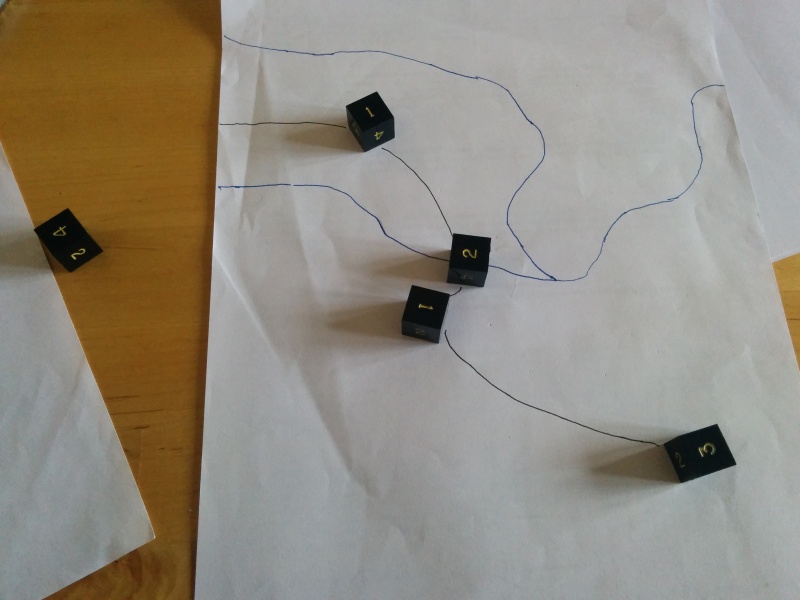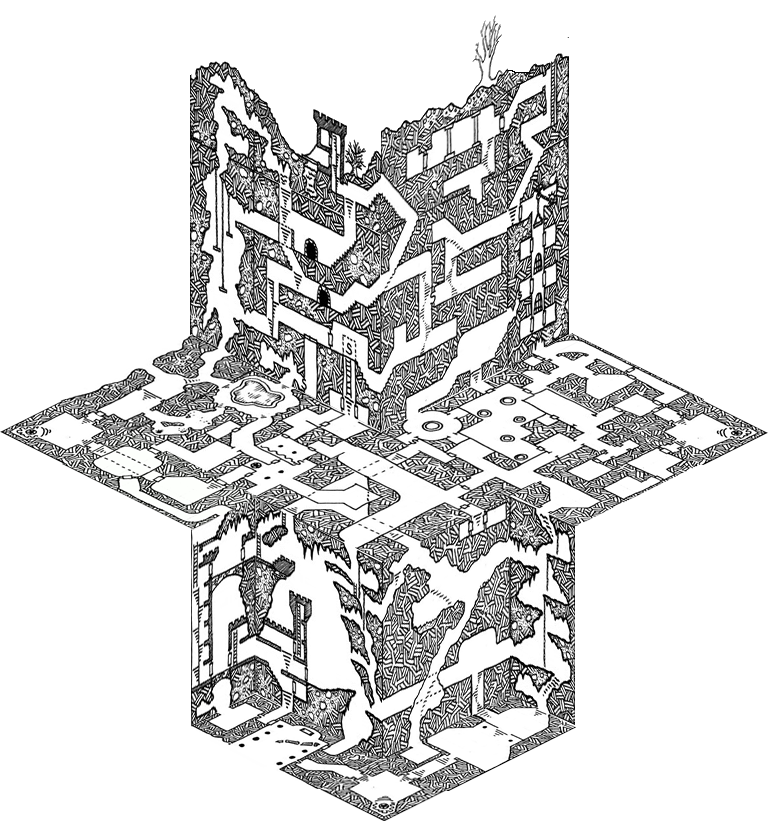Chthonic Codex: Mysteries & Mystagogues features CHTHONOTRON, which is a pointcrawl generator for the Hypogea. Follow it and you have a serviceable campaign map for you Chthonic Codex campaign, or any similar mythic-caverns-underworld-crazy place with rivers and weird stuff.
So, this is the end result: a map showing canyons in blue, big caves are thick black, narrow caves are fine black. The marks are explained later How did I get there?
How did I get there?
Repeatedly tossing 5 dice on the map and tracing a line through them. Starting with the first river:

Then the second river, flowing into the first. That die went exactly on the other river randomly, when rivers intersect I recommend making them flow into each other, despite theoretically being able to flow over each other, being underground and stuff. And then repeatedly for the caves. First cave, that leads off map because one of the dice went off map:
And then repeatedly for the caves. First cave, that leads off map because one of the dice went off map:

Then second cave and third cave.


And so on. Then I thickened the first caves (they be biiig caves), added more caves, thickened the rivers.
Then I added marks to show distances: but since in this setting you usually walk everywhere, they are marked in time instead of distance. And since I wanted finer granularity in some places, I used marks of different colours: the distance between two black marks is 1 hour, between a green and a black or two greens is 20 minutes. This different granularity is not in the book but it’s a very tiny yet useful hack.
The next step is to populate the caves with the Chthonic Contents section of CHTHONOTRON. I’ll leave that up for later, in another post.





 Instant Dungeon! And a big one!
Instant Dungeon! And a big one!
